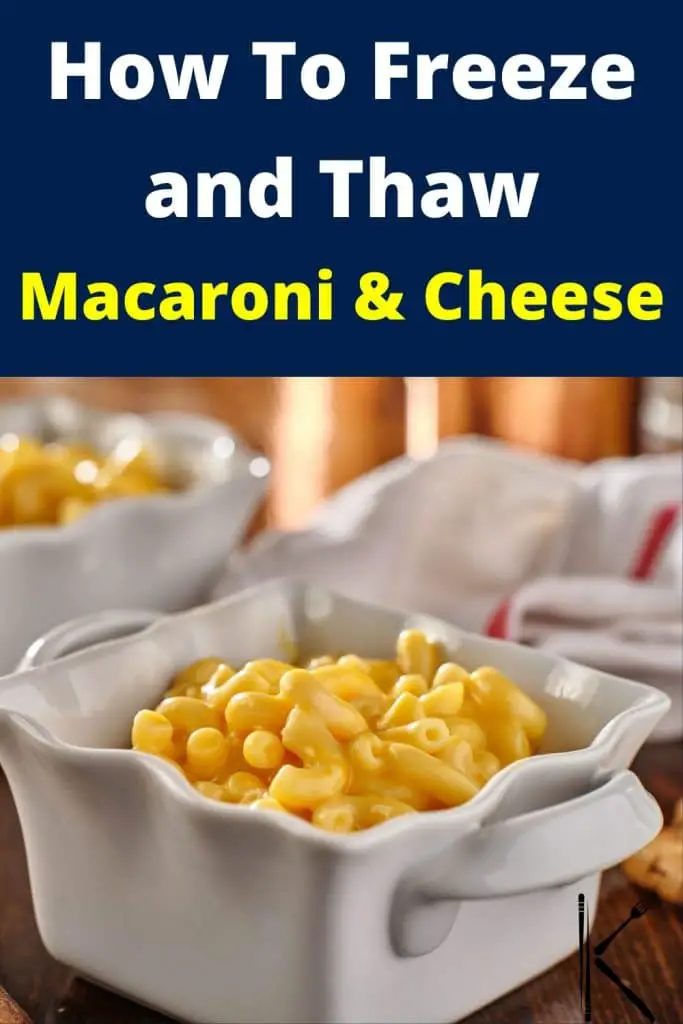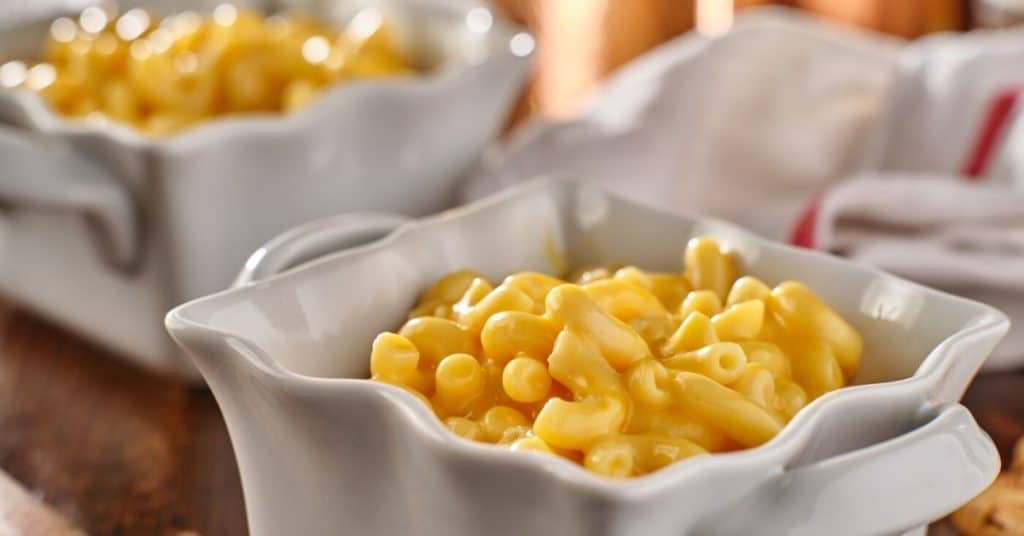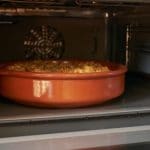In summary: Yes, you can freeze mac and cheese, but it’s important to take precautions to maintain its texture and flavor, such as protecting it from freezer burn and ensuring a consistent temperature throughout storage; proper preparation is key to avoid issues like soggy pasta or a dry end product.
Creamy, cheesy, and salty—it is no wonder mac and cheese is one of the most popular comfort foods out there. Having this well-loved favorite on hand as an easy quick fix would be ideal because we sometimes just don’t have the patience to wait 90 minutes for dinner.
The good news is, not only can you preserve mac and cheese leftovers for a second heat-and-eat, but next time you cook a batch of cheesy goodness, you can make a double batch to freeze and simply pop it into the oven before your guests arrive for a freshly baked macaroni and cheese winner.
Here is a step by step guide with everything you need to know about freezing and reheating macaroni and cheese.
Can Mac and Cheese Be Frozen?
Yes. Regardless of the preparation type, macaroni and cheese can be frozen. Due to its high dairy content, careful precaution needs to be taken to ensure it remains safe to eat and keeps its appetizing texture upon defrosting.
To prevent mac and cheese from flavor or textural changes in the freezer, it is important to protect the dish from freezer burn. Keep the temperature consistent throughout the length of the storage period.
Problems you could have if you do not prepare the dish properly for freezing, include soggy pasta, secretion of watery liquids, or a dry end product. Below, you will find out exactly how to go about freezing mac and cheese for an on-hand comforting cheesy meal at any time.
How To Freeze Mac and Cheese
Mac and cheese can be frozen either before baking, or after it has been cooked. Freezing the dish before baking results in a creamier dish once cooked as it has not been heated up twice. Doing this, however, is only possible if you are making an extra batch for future catering.
If you need to freeze leftovers from an already cooked batch, that is perfectly fine too. Creamy versions of mac and cheese are ideal for freezing as they have more sauce keeping the pasta moist when reheating.
Who would want to send any cheesy goodness to the bin when it can be enjoyed again by simply preserving it in the freezer?
How To Freeze Cooked Mac and Cheese
Step 1: Cool Completely
Leaving your warm homemade mac and cheese at room temperature for too long places it at risk for harmful bacterial growth. The safest way to cool your warm mac and cheese dish is by placing it in an ice bath.
Pour ice water into a flat pan or dish which is wider than the mac and cheese serving dish. Fill it only one-third of the way with water and a few ice cubes. Place your macaroni dish in the ice bath so that the base is surrounded by the ice water and cools down quickly.
Leave the dish in the ice bath for at least 5 minutes, until cool to touch or near room temperature. Don’t ever place mac and cheese that is still warm in the freezer. The steam forms ice-crystals which will ruin the texture of the dish once thawed.
Step 2: Portion
If you are going to freeze cooked macaroni and cheese in its entirety, skip this step and go straight to step 3. Portion the mac and cheese into individual servings so that you do not have to defrost the entire batch at once and can take out just as much as you need at a time.
Step 3: Wrap and Seal
For smaller portions, scoop each portion into a resealable freezer bag. Lie the bag flat and press out all the air before sealing.
If you are freezing an entire casserole, make sure the dish you have baked your macaroni and cheese in is freezer-friendly. Cover the whole dish twice with plastic wrap, making sure that all the corners are well-sealed and that no gaps are left open where air can enter.
Step 4: Foil Wrap
Now, it is time to put the second layer of protection to prevent freezer burn. Cover your full, cling film wrapped dish with a layer of foil. Again, ensure that all the edges are completely covered to create a tight seal around the whole dish.
Ziplock freezer bags can be wrapped in foil for extra protection or placed in a freezer safe container.
Step 5: Label and Freeze
Label your wrapped containers with the contents and date as this will help you keep track as to how long it has been in the freezer.
How To Freeze Uncooked Baked Mac and Cheese
This method still involves some cooking as you will have to prepare the pasta and the sauce as per the recipe before baking. It is, however, a great option to simply take the dish out of the freezer, pop it in the oven and have a freshly baked mac and cheese on hand.
Freezing unbaked mac and cheese results in a creamier texture and better-tasting end product than freezing macaroni and cheese that’s already a completely cooked dish.
Step 1: Prepare the Recipe
Prepare your mac and cheese as per the recipe and fill one large dish or alternatively a number of individual portions in smaller dishes with your precooked mac and cheese mix. Fill the dishes slightly below the rim and top with breadcrumbs as required. Make sure that the dishes you use are both freezer-friendly and oven safe.
Step 2: Cling Wrap
Wrap each dish with a double layer of plastic wrap ensuring that it is well-sealed and no gaps are left open where air can get in. The presence of air can cause freezer burn, affect the taste and the texture of the dish.
Step 3: Foil Wrap
Cover the dish again in a layer of foil to create a secure seal.
Step 4: Label and Freeze
Label the wrapped containers with the contents and date as this will help you keep track of how long it has been in the freezer. Arrange the dishes in a flat, open area of the freezer to ensure it freezes evenly. Placing them on a baking sheet in the freezer can help to keep them at an even level. Once completely frozen, remove the baking sheet as there will be no more chance of spilling.
How To Thaw Mac and Cheese: Step by Step Instructions
The way you defrost and reheat mac and cheese will depend on whether it has been cooked before freezing or whether it is the first time you will be baking it.
How To Defrost Cooked Mac and Cheese
Step 1: Thaw
Take the frozen macaroni and cheese out of the freezer and place it in the fridge. Thaw frozen mac and cheese overnight.
Step 2: Remove Wrapping
Once thawed, remove the cling film and aluminum foil wrapping. Keep the foil wrapping aside as you may use it again later.
Step 3: Heat
Now that the mac and cheese is thawed, you can choose to reheat baked mac in the microwave, on the stovetop, or in the oven. If the mac and cheese is dry after defrosting, you can add a little milk when reheating to add moisture.
Heating in the microwave: Put your thawed and unwrapped mac and cheese in a microwave-safe bowl. Microwave on high for 1 to 2 minutes at a time, stopping to stir it between increments. Continue until it is heated through.
Heating on the stovetop: Place your thawed mac and cheese in a pot adding a few tablespoons of milk to the serving. Heat on medium-low while stirring to ensure that it is evenly heated through.
Heating in the oven: Preheat the oven to 350°F (180°C). Transfer your thawed and unwrapped mac and cheese to an oven-safe dish. Covering the dish with foil will keep it moist. Bake for 15 to 20 minutes depending on the portion size.
If you wish to have a crispy topping, remove the foil after it is heated through and top with breadcrumbs and cheese. Place the dish under the grill for 2 to 5 minutes just until it turns golden brown.
How To Thaw and Cook Unbaked Frozen Mac and Cheese
When baking uncooked mac and cheese after freezing, you do not have to thaw overnight. Thawing it will decrease the cooking time, however, you can just place the frozen dish into the oven to work its magic if you are not in a hurry for it to cook.
Step 1: Preheat the Oven
Preheat the oven to 375 °F (190 °C).
Step 2: Defrost (Optional)
If you are cooking the mac and cheese after freezing, skip this step and go straight to step 3.
To defrost your macaroni and cheese in the microwave before cooking it, you need to ensure it is in a microwave-safe dish. Remove the foil. Use the ‘defrost’ setting on the microwave which is equal to 30% power. Check the dish after seven minutes and continue to defrost for a few more minutes, if needed.
Once thawed, continue baking it in the oven straight away.
Step 3: Cover With Foil
Whether frozen or thawed, remove any cling film wrapping from your dish and cover the top with foil only. Set the dish on a baking tray to prevent any cheese or juices from melting or dripping onto the base of the oven.
Step 4: Bake
Make sure the oven is heated completely to 375 °F (190 °C) before placing the mac and cheese inside to cook. Bake the foil-covered dish for 25 to 50 minutes depending on the size of the dish and whether it has been thawed.
Step 5: Remove Foil and Bake
The foil only stays on the dish as part of the baking process. Remove the foil and bake the uncovered dish for another 5 to 25 minutes. If your portions are small, bake them uncovered for an additional 5 to 10 minutes. If you are baking a large tray of mac and cheese, continue cooking it uncovered for another 25 minutes.
Step 6: Remove and Cool
Once the top is golden brown, remove the mac and cheese from the oven. Switch the oven off. Let the dish cool for a few minutes before serving as it will be piping hot.
Types of Mac and Cheese
Mac and cheese recipes can be prepared in two distinctly different ways:
Oven-baked Mac and Cheese
As the name suggests, oven-baked mac and cheese is made by baking the pasta and cheese sauce in the oven in a large casserole dish. It is usually drier than stovetop mac and cheese, with a slightly more set structure.
An oven-baked mac and cheese recipe includes a breadcrumb topping which crisps up as it is baked. The aim is a soft creamy macaroni dish covered in a crispy cheesy topping.
Stovetop Mac and Cheese
Stovetop mac and cheese is faster to make than its oven-baked counterpart. It involves stovetop cooking of the pasta, making of the cheese sauce, and mixing the two together. It is creamy, has a saucy texture, and does not have any crispy toppings.
FAQs
Conclusion
Whether it’s the quick and easy stovetop type or the baked crispy topping that has you weak at the knees, don’t worry about wasting any of your delicious creamy cheesy macaroni. Just wrap it well and pop it in the freezer for another day’s gooey indulgence.
Make sure to carefully follow the freezing guidelines and precautions to prevent your dish from spoiling, getting freezer burn, or thawing with a soggy or dry texture. For the best flavor and texture, eat it within three months of freezing.
Enjoy your bowl of creamy comfort without any hassle.
Up Next: 3 Best Ways To Reheat Macaroni and Cheese

Image by depositphotos/resnick_joshua1









